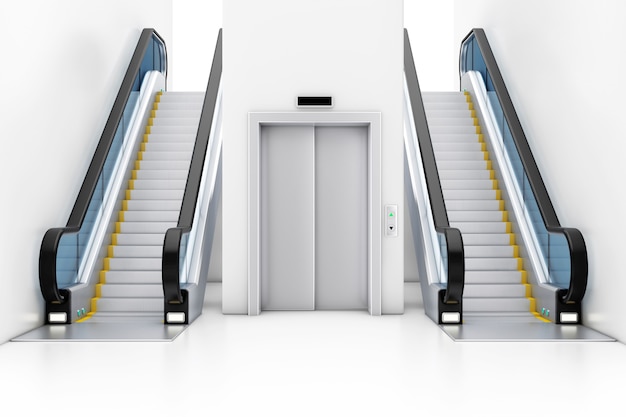Discover the Best Disabled Platform Lifts Prices UK for Residential and Commercial Use
Discover the Best Disabled Platform Lifts Prices UK for Residential and Commercial Use
Blog Article
Looking Into the World of Elevators: Typical Concerns Faced by Different Lift Mechanisms
As we browse via the upright transport systems of modern-day structures, lifts stand out as an indispensable component of our day-to-day lives. From hydraulic lifts to traction systems and machine-room-less designs, each lift kind comes with its set of usual problems.
Hydraulic Elevators
Hydraulic lifts, usually liked for low-rise buildings, use fluid pressure to manage the activity of the lift cars and truck (lift repair companies). This system entails a hydraulic pump pressing oil into a cyndrical tube, causing the lift to relocate in the desired instructions. While hydraulic lifts are known for their smooth and peaceful operation, they do feature their own set of common concerns
One prevalent trouble with hydraulic lifts is oil leakage. The seals in the hydraulic system can put on out gradually, bring about oil infiltration. If left unaddressed, this not only creates a mess yet can likewise impact the lift's efficiency. Additionally, problems with the control system, such as damaged valves or a malfunctioning pump, can create disturbances in the lift's activity.
Routine upkeep and prompt repairs are important to make certain the smooth performance of hydraulic lifts. By dealing with these usual problems proactively, building owners can decrease downtime and ensure the security and efficiency of their upright transport system.
Grip Elevators
When thinking about vertical transportation systems in structures, an additional typical kind in addition to hydraulic elevators is the grip elevator. Traction elevators run using a system of ropes and counterweights that move the elevator car by gripping onto the hoist ropes. This device permits smoother and quicker vertical transportation compared to hydraulic systems.
Among the common issues encountered by grip elevators is rope wear. The continuous motion of the ropes within the grip system can result in wear and tear over time, possibly causing the lift to malfunction or come to be hazardous for usage. Routine assessments and maintenance of the ropes are important to make sure the lift's proper functioning and safety and security.
Another concern that grip elevators may encounter is associated to the control system. Issues with the control system can result in problems such as irregular activity, hold-ups in feedback times, or perhaps full closures. Routine testing and maintenance of the control system are vital to stop such problems and ensure the lift's reliability.
Machine-Room-Less (MRL) Elevators

One of the key elements of MRL lifts is the compact gearless grip maker that is set up within the hoistway. This machine successfully drives the lift vehicle without the need for bulky equipment located in standard grip lifts. Furthermore, MRL elevators generally utilize a counterweight system to balance the car, further boosting lift companies in London their power performance.
In spite of their advantages, MRL lifts may encounter difficulties associated with repair and maintenance due to the constrained area for equipment installation. Availability for servicing elements within the shaft can be restricted, requiring specialized training for service technicians. Appropriate maintenance routines and normal assessments are vital to make certain the continued smooth operation of MRL lifts.
Overloading and Weight Limit Issues
Are elevators geared up to take care of excess weight loads effectively and securely? Straining and weight limitation problems are crucial concerns in lift operations. Lift manufacturers layout raises with particular weight capabilities to make sure traveler safety and security and devices long life. Exceeding these weight limitations can lead to different problems, including mechanical failings, delays, and security dangers.
When elevators are overloaded, it places too much strain on the electric motor, cords, and other elements, potentially creating break downs or malfunctions. If they identify excess weight, security mechanisms such as sensors and overload sensors are in location to avoid lifts from moving. Additionally, surpassing weight restrictions can cause raised power consumption and deterioration on the elevator system.
To reduce overloading concerns, developing supervisors must prominently show weight restrictions in elevators and enlighten owners on the significance of sticking to these constraints - lift repair companies. Normal upkeep checks by qualified professionals can likewise help ensure that lifts are running within risk-free weight specifications. By dealing with overloading and weight limit issues proactively, building proprietors can improve lift companies in London lift safety and efficiency
Electric System Failings
Going beyond weight restrictions in lifts can not just lead to mechanical concerns yet also potentially add to electrical system failures within the lift facilities. Electrical system failures are a crucial worry in elevator operation, as they can cause unforeseen closures, breakdowns, or even safety and security hazards.
Additionally, power rises or changes in the electrical supply can also disrupt the elevator's procedure, affecting its efficiency and safety and security. These electric disruptions can harm sensitive elevator parts such as control board, circuit boards, or sensing units, leading to system failings. Regular upkeep and examinations are vital to recognize and deal with possible electrical problems promptly, making certain the effective and secure procedure of lift systems. By sticking to weight restrictions and conducting regular electrical system checks, structure proprietors can reduce the risk of electrical failures in elevators.
Verdict
Hydraulic elevators, usually chosen for low-rise buildings, utilize fluid pressure to regulate the activity of the lift cars and truck.When taking into consideration upright transport systems in buildings, an additional typical kind apart from hydraulic lifts is the grip lift. Grip elevators operate utilizing a system of ropes and counterweights that move the lift car by gripping onto the hoist ropes. Unlike conventional lifts that call for a different device space to house the equipment, MRL elevators incorporate most of the elements within the shaft, getting rid of the requirement for a dedicated device space.In final thought, lifts deal with typical problems such as hydraulic breakdowns, london lift company grip system failures, and electric system troubles.
Report this page